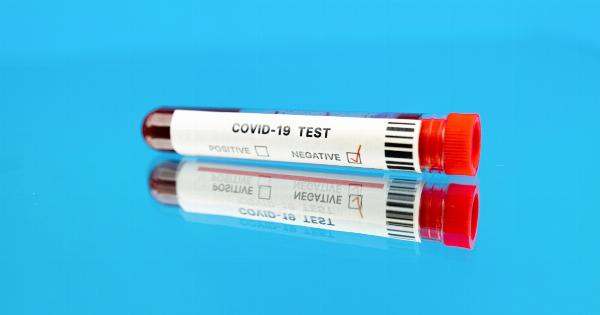Researchers have announced a major breakthrough in the treatment of Middle East Respiratory Syndrome (MERS), a viral respiratory illness that emerged in the Middle East in 2012.
The discovery could potentially save thousands of lives and revolutionize the way we combat this deadly disease.
MERS: A Global Health Threat
MERS is caused by a coronavirus called MERS-CoV, which is believed to have originated in bats and was later transmitted to humans through camels.
Since its initial outbreak, MERS has spread to several countries, resulting in over 2,400 confirmed cases and more than 800 deaths to date. The disease is characterized by severe respiratory symptoms, including fever, cough, and shortness of breath, and has a fatality rate of around 35%. Despite efforts to control its spread, MERS continues to pose a significant global health threat.
The Challenges of MERS Treatment
Until now, there have been limited treatment options available for MERS. Supportive care, such as supplemental oxygen and mechanical ventilation, has been the primary approach to managing the symptoms of the disease.
Antiviral drugs have shown some promise in laboratory studies, but their effectiveness in clinical settings has been questionable.
Additionally, the lack of a specific vaccine against MERS has hindered efforts to prevent new infections. Developing a vaccine has proven challenging due to the complexity of the virus and its ability to rapidly mutate.
This has led researchers to focus on alternative treatment approaches.
The Breakthrough Discovery
A team of scientists working at a leading research institute has made a significant breakthrough in the search for an effective treatment for MERS.
Their research, recently published in a prominent medical journal, highlights a potential therapeutic target that could halt the progression of the disease.
Understanding MERS-CoV Replication
In order to develop effective treatments for MERS, scientists first need to understand how the virus replicates in the human body.
The breakthrough discovery centers around an enzyme called PLpro, which plays a crucial role in the replication process of MERS-CoV.
By studying the structure and function of PLpro, researchers were able to identify a specific inhibitor that targets this enzyme.
This inhibitor effectively prevents the virus from replicating, halting the spread of the disease and reducing the severity of symptoms.
The Promise of PLpro Inhibitors
The development of PLpro inhibitors represents a major breakthrough in the fight against MERS. These inhibitors have shown impressive efficacy in laboratory experiments, blocking the replication of MERS-CoV and reducing the viral load significantly.
Furthermore, early animal studies have demonstrated the potential of PLpro inhibitors as a viable treatment option. Infected animals treated with the inhibitors showed reduced lung inflammation, improved lung function, and increased survival rates.
These promising results provide hope for the successful translation of this breakthrough into clinical practice.
Challenges and Next Steps
While the development of PLpro inhibitors is undoubtedly a major advancement, there are still challenges to overcome before they can be widely used as a treatment for MERS.
Drug formulation, safety, and efficacy for human use are just a few of the considerations that need to be addressed.
However, the groundbreaking discovery paves the way for further research and development in the field of MERS treatment.
Scientists are now exploring ways to optimize the inhibitors for use in humans and conducting additional studies to assess long-term effects and potential side effects.
Implications for Global Health
The discovery of a potential breakthrough in MERS treatment carries significant implications for global health.
Beyond the immediate impact on MERS patients, this breakthrough has the potential to inform the development of treatments for similar respiratory viruses, including other coronaviruses with pandemic potential.
In addition, the knowledge gained from this research can contribute to strategies for preventing future outbreaks and enhancing preparedness for emerging infectious diseases.
By understanding the mechanisms of MERS replication and the role of PLpro, scientists can develop targeted interventions and therapies that can be deployed promptly in the event of a new outbreak.
A Race Against Time
The search for effective treatments for MERS has been ongoing since the first outbreak, and the breakthrough discovery brings renewed hope to patients, healthcare professionals, and researchers alike.
However, time is of the essence in combating this deadly disease.
As the global threat of MERS looms large, it is imperative to expedite the development and deployment of PLpro inhibitors.
Increased funding and collaboration among researchers, healthcare organizations, and governments will be crucial in ensuring that this breakthrough translates into improved patient outcomes and ultimately saves lives.
The Future of MERS Treatment
The recent breakthrough in MERS treatment serves as a glimmer of hope in the fight against this devastating disease.
With continued research and development, PLpro inhibitors have the potential to transform the way we approach MERS and similar respiratory illnesses.
By targeting the replication process of the virus, these inhibitors could not only reduce the severity of symptoms but also limit the transmission of MERS-CoV, ultimately leading to fewer infections and fewer deaths.
Conclusion
The breakthrough in MERS treatment represents a significant milestone in the battle against this deadly disease.
The discovery of PLpro inhibitors offers renewed hope for patients and healthcare professionals, bringing us one step closer to conquering MERS once and for all.




























